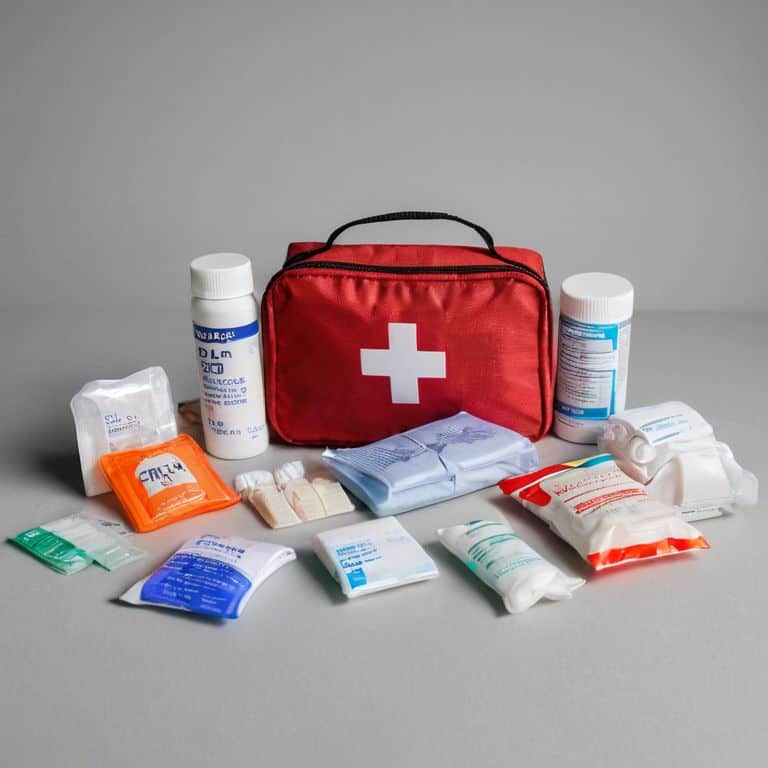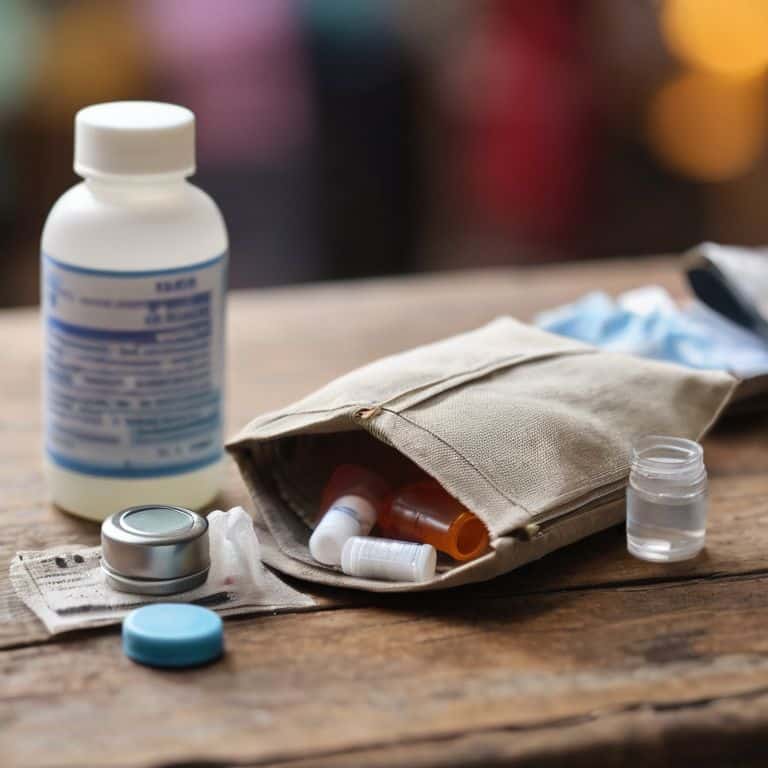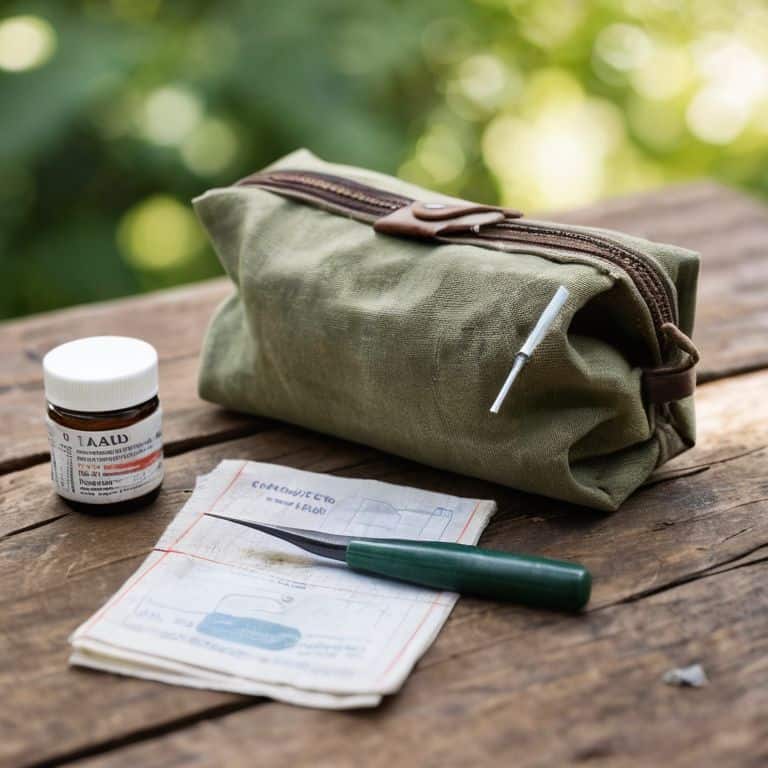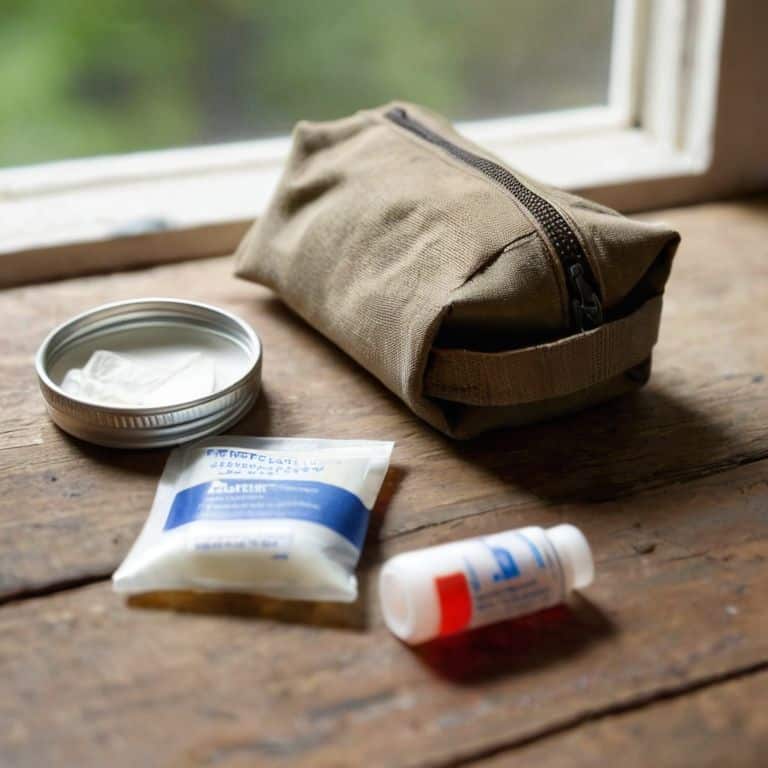I still remember the time I found myself in a small village in rural Japan, desperately searching for a decent band-aid to cover a nasty cut on my finger. It was then that I realized the importance of packing a minimalist travel first-aid kit. But what to pack in it? The answer, I soon discovered, lies not in the fancy gadgets or bulky supplies, but in the simple, essential items that can make all the difference in a pinch. When it comes to deciding what to pack in a minimalist travel first-aid kit, it’s easy to get caught up in the hype and pack everything but the kitchen sink. But trust me, I’ve been there, and it’s just not worth the hassle.
As someone who’s spent years navigating the ups and downs of international travel, I’ve learned that it’s all about striking the right balance between preparedness and practicality. In this article, I’ll share my honest, no-hype advice on what to pack in a minimalist travel first-aid kit, from the must-have medications to the clever tricks for improvising when things go wrong. I’ll give you the lowdown on how to create a kit that’s tailored to your specific needs, whether you’re a seasoned adventurer or just starting to explore the world. So, if you’re ready to ditch the unnecessary bulk and focus on the essentials, keep reading – I’ve got you covered.
Table of Contents
Guide Overview: What You'll Need

Total Time: 30 minutes
Estimated Cost: $20 – $30
Difficulty Level: Easy
Tools Required
- Small pouch or container (to store items)
Supplies & Materials
- Band-Aids (assorted sizes)
- Gauze pads (2 inches x 2 inches)
- Antiseptic wipes (10-15 count)
- Pain relievers (e.g., acetaminophen or ibuprofen)
- Antihistamine (for allergic reactions)
- Medical tape (1 roll, 1 inch wide)
- Scissors (small, 5 inches long)
- Tweezers (for splinters or ticks)
- First-aid manual (optional, but recommended)
Step-by-Step Instructions
- 1. First, let’s start with the basics – a good quality backpack or bag to carry all your essentials. When I’m packing my minimalist first-aid kit, I like to think about the types of injuries I might encounter on the road, from scrapes and cuts to more serious ailments. This helps me prioritize what to include and what to leave behind.
- 2. Next, I add a small supply of bandages and band-aids in various sizes. These are must-haves for any minor cuts or scrapes, and I’ve found that it’s always better to have a few extras on hand. I also like to include a small packet of antiseptic wipes, which can be used to clean wounds and prevent infection.
- 3. Now, let’s talk about pain relief. As someone who’s spent their fair share of time on buses and trains, I can attest to the importance of having a good pain reliever on hand. I opt for a small bottle of ibuprofen or acetaminophen, which can help with everything from headaches to muscle aches. It’s also a good idea to include a small supply of antihistamines, which can be used to treat allergic reactions.
- 4. In addition to these basics, I also like to include a small first-aid manual or guide. This can be a lifesaver in emergency situations, and it’s always a good idea to have some guidance on hand. Look for a manual that’s specifically designed for travelers, and that covers topics like wound care and basic first aid techniques.
- 5. Another essential item in my minimalist first-aid kit is a small supply of prescription medications. If you take any regular medications, be sure to pack them in your first-aid kit, along with a copy of your prescription and any relevant medical information. It’s also a good idea to include a small supply of motion sickness medication, which can be a lifesaver on long bus rides or boat trips.
- 6. Next up is a small suture kit, which can be used to treat more serious wounds. I know it sounds intimidating, but trust me – having a suture kit on hand can be a game-changer in emergency situations. Just be sure to follow proper instructions and take necessary precautions to avoid infection.
- 7. Finally, I like to include a small supply of personal care items, like hand sanitizer and any personal medications. These may not be strictly first-aid related, but they can be essential for maintaining your health and well-being on the road. Consider adding a small packet of vitamin C tablets or other supplements to help boost your immune system.
Packing Light

As I’ve wandered through the vibrant markets and alleyways of foreign lands, I’ve learned that packing light is an art that requires a deep understanding of the local environment and the rhythms of the road. When it comes to assembling a minimalist first aid kit, it’s essential to strike a balance between preparedness and portability. I’ve found that opting for travel size medical supplies can be a game-changer, allowing me to carry only the essentials without weighing myself down.
One of the most critical aspects of packing a lightweight first aid kit is customizing it to your specific needs. Consider the types of activities you’ll be engaging in, the climate and terrain of your destination, and any pre-existing medical conditions you may have. For example, if you’re planning a backpacking trip, you may want to include items like blister care and pain relievers in your first aid kit for backpacking. By tailoring your kit to your unique requirements, you can ensure that you’re well-equipped to handle any situation that may arise.
In my experience, natural remedies for travel ailments can be a valuable addition to any minimalist first aid kit. From herbal teas to essential oils, these remedies can provide a gentle and effective way to soothe common travel complaints like jet lag and digestive issues. When selecting items for your kit, be sure to choose mini first aid kit for camping essentials that are compact, lightweight, and easy to use, such as bandages, antiseptic wipes, and pain relievers.
Minimalist First Aid Kit Essentials
As I delve into the world of minimalist first aid kits, I’m reminded of the vibrant markets I’ve visited, where local artisans weave tales into every handmade item. For me, a well-curated kit is akin to a richly woven tapestry – each item a thread that strengthens the entire narrative. I focus on the essentials: bandages woven from natural fibers, antiseptic wipes infused with the essence of local herbs, and pain relievers that have been time-tested by generations of travelers.
In my kit, you’ll find a small, leather-bound pouch containing a few, carefully chosen items – a reflection of my belief that sometimes, less truly is more. A minimalist approach to first aid allows me to move freely, unencumbered by bulky packs, and to truly immerse myself in the world around me.
Natural Remedies for Travel Ailments
As I’ve wandered through local markets and learned from traditional healers, I’ve discovered the beauty of natural remedies for common travel ailments. A pinch of turmeric for inflammation, a sip of ginger tea for nausea, or a dash of apple cider vinegar for digestive issues – these simple solutions have become staples in my minimalist first-aid kit. Not only do they take up less space, but they also offer a more holistic approach to healing.
I’ve found that carrying a small pouch of dried herbs like peppermint, chamomile, and lemongrass can work wonders for calming the mind and soothing the body. And, of course, a tube of locally-sourced honey is always a welcome addition – its antibacterial properties and soothing texture make it a natural remedy for scrapes and sore throats.
The Artisan's Essentials: 5 Treasures to Tuck into Your Minimalist First-Aid Kit
- Bandages woven from natural fibers, like cotton or bamboo, which breathe and conform to your skin like a gentle summer breeze
- A small vial of pure, unadulterated lavender oil, distilled from the sun-kissed fields of Provence, to calm the skin and soothe the senses
- A compact, hand-carved wooden box filled with an assortment of herbal teas, each one carefully selected to remedy a different travel ailment, from chamomile for restless nights to ginger for queasy stomachs
- A delicate, gemstone-tipped acupuncture needle, passed down through generations of traditional healers, to ease tension and restore balance to the body
- A tiny, leather-bound book filled with handwritten notes on local remedies and medicinal plants, gathered from wise women and village elders during my own travels, to guide you in foraging for nature’s own pharmacy
Embracing the Art of Traveling Light: 3 Key Takeaways
As I reflect on my journeys, I’ve come to realize that a minimalist first-aid kit is not just about packing less, but about packing smart – focusing on the essentials that can help you navigate the unexpected twists and turns of travel
Natural remedies, such as herbal teas and essential oils, have become my go-to companions on the road – not only do they take up less space, but they also offer a more holistic approach to healing, one that resonates deeply with the local cultures I’ve had the privilege of immersing myself in
By adopting a mindful approach to travel, one that prioritizes experience over expense, and people over landmarks, I’ve found that the true beauty of a place lies not in its grandeur, but in the subtle, often overlooked details – the taste of a local dish, the sound of a foreign language, the warmth of a stranger’s smile – and it’s these moments that I believe make traveling truly unforgettable
The Art of Packing Light
A minimalist first-aid kit is not just about the items you pack, but about the stories of resilience and resourcefulness they tell – of a traveler who understands that sometimes, the best cure for a wounded soul is a pinch of local wisdom and a whole lot of curiosity.
Anika Sharma
Embracing the Art of Minimalist Travel

As I reflect on the essentials of a minimalist travel first-aid kit, I’m reminded that it’s not just about the items we pack, but about the mindset we adopt. Packing light is a philosophy that extends far beyond the physical realm, allowing us to immerse ourselves more fully in the cultures and landscapes we encounter. By focusing on the bare necessities – a well-stocked kit, a dash of common sense, and a willingness to adapt – we open ourselves up to a more authentic, more intimate experience of the world around us.
So as you set out on your next adventure, I encourage you to embrace the art of minimalist travel with an open heart and mind. Remember that the true beauty of a place lies not in its landmarks or tourist attractions, but in the hidden moments and unexpected encounters that await us just off the beaten path. By traveling with intention and simplicity, we may just discover that the greatest treasures we bring back are not the souvenirs we collect, but the stories we tell and the memories we hold dear.
Frequently Asked Questions
What are some common mistakes to avoid when packing a minimalist first-aid kit for travel?
As I’ve learned from my own misadventures, it’s easy to overpack or underprepare. Common mistakes include forgetting personal prescriptions, packing unnecessary items, and not considering the destination’s specific health risks. Let’s get real – a good first-aid kit is all about balance and research, darling!
How can I ensure that my first-aid kit is suitable for different climates and environments?
As I’ve wandered through scorching deserts and lush rainforests, I’ve learned to tailor my first-aid kit to the environment. For tropical climates, I add anti-fungal creams and mosquito-borne illness treatments, while for dry climates, I prioritize moisturizing wound care and lip balms. It’s all about being mindful of the local landscape and its potential hazards.
Are there any specific medications or supplies that I should always include in my kit, regardless of my destination?
For me, it’s all about the essentials: pain relievers, antacids, and antibacterial ointments. I also swear by a good supply of band-aids, gauze, and medical tape. And, of course, any personal medications you can’t live without. But here’s the thing: it’s not just about what you pack, it’s about knowing how to use it, and being mindful of what you might need in a pinch.
